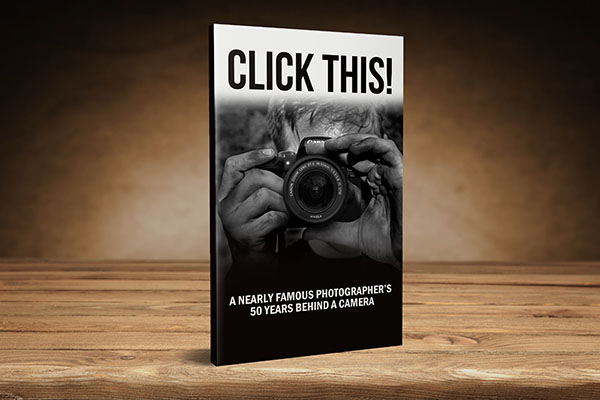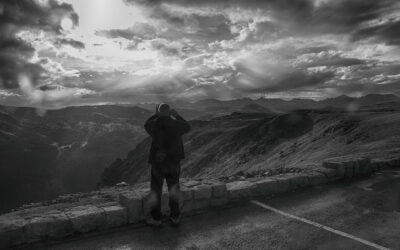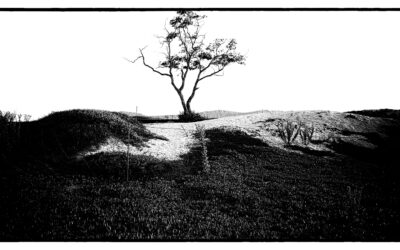IT'S TOUGH TO QUIT THAT 9-5... BUT HERE'S A ROADMAP
BUILDING YOUR SYSTEM, WORKING YOUR PLAN... AND ANYTHING IS POSSIBLECan’t figure a way of that nine to five? Here’s an idea or two.
One of the hardest things to do when making that transition from full-time worker to self-employed creative is to know when to make that jump. Even HOW to make that jump seems almost an impossible to define moment.
I have been working with people making that switch from worker bee to the boss bee. It’s never easy, and those who want to sell you on how easy it is to quit your job are liars. Straight up.
In past generations, young people went into the business one of two ways.
One, they were somewhat well-off or had some sort of recurring income that could help them survive the brutal cost of entry. A spouse bringing in six figures with all insurance costs covered, or perhaps a settlement or inheritance. I know examples of all three of these.
Two; they started out as an assistant to a working photographer. This job paid crap, demanded absolute attention, and provided no amenities like insurance and benefits.
But it introduced the assistant to the way of the commercial photographer’s world. They learned lighting, composition, handling a large set, bidding a job, wrangling talent, dealing with difficult clients, waiting to get paid, and fights over-usage. And a hell of a lot more that is not covered in photography school.
As to photography school… you will still have to get into this business somehow at a very low position. Do you want to do that with no debt or with $130K debt hanging over your head? It’s up to you. I am so tired of watching young people go into deep debt to get a chance to do a job that pays shit for the first few years… all the while the people at the schools are all making bank. Just fucking stupid.
Then to add more salt to the wound you have to have a good portfolio to get a gig but how do you build a good portfolio if no one will hire you for a gig? A conundrum everyone who is not rich or living in a 5th-floor walkup with 6 other people eating Ramen has to confront.
And it can be done… I watch it being done every week. My group mentorship is full of photographers who are getting gigs, meeting new clients, finding new possibilities, and importantly – billing for their work.
And I need to make this very clear… it is NOT easy. You will not be able to work from the beach in your swimsuit for 3 hours a day.
But it is real.
Let’s look at some ways to make this work for you… yeah, YOU. You read this far, so it must be something you are thinking about.
Let’s jump in and ask some questions. And remember that you are doing this NOW, while you are still working your ‘regular job’.
- How much do you have to make to be comfortable making a break from your current 9 to 5 to a new creative life? Cool. Now do it again and ask if what you included was absolutely NECESSARY to keep when you make that jump. Do you really need that $240 cable bill? Can you get by without buying a new car for a few years? Are there things you have that cost you money every month but you could do OK without? Say, a membership, or a club fee? Or maybe you have more than one motorcycle… no, wait. I get that. Nevermind. Now make some hard cuts – yeah, even that big Harley you hardly ever ride – and find that new number. You are banking on yourself – betting on your talent and skills to build a business that will make it possible to get that stuff again. On YOUR terms. Can you find good health insurance for less than the stellar plan you have? Cover the emergencies, and the frightening moments, but take care of the colds and scraped knees yourself. Health insurance is the number one reason why people do not make the break, and yet once they do they always find a way to get it. Interesting.
- Take an asset assessment. What do you have already that can make that transition easier? Do you have access to a studio? Are you sure…? Many times you may have a friend or relative with an extra room or an empty warehouse space you can get for a song and a promise. Are there rental spaces in your town? Do you have an accountant, or are you pretty good at keeping track of money, incoming and outgoing? Being able to do the heavy lifting and just getting your taxes prepared can save a lot. Do you have a safety net? You know, for the next time we have to flatten the curve for 15 days only to find out they actually meant 18 months. Heh. No, of course you don’t. But if you have enough to carry you for 6 months, that is a pretty good safety net. And one that you will appreciate being there even if you don’t need to use it. Do you have a good support system? Are your spouse and family on board to help (maybe not financially, but you are going to need some spiritual and emotional support as you begin this trek)? Trying to start a business without the support of a spouse, family, or dedicated friends can be disastrously hard. I mean it.
- Gear. Yeay… we get to talk about gear!!! Sort of. Do you have the gear you need? Do you have more than you need? Do you have something you really – REALLY – need and have not purchased yet? For instance; you want to be a tabletop/food shooter and you are sporting a kit with a 20MM, 24-120MM, 35MM, 50MM, 70-200MM, and a 400MM tele. That’s a cool kit, but you are over-kitted for a tabletop shooter. A simple 24-120MM and a fast 35mm or 50MM would be just fine. You may be a bit over-kitted. You will be using that 50MM and the 24-120MM zoom most of the time. Sell the 20 and the 35 and the long lens and buy that thing you need more of… time. Rent a studio and work on the book. But say you want to be an editorial shooter… then that kit is pretty good. But you only have three speedlights and two of them are very old. You need lights. Sell the 400MM and buy a good kit (2 AD200 units and 1 AD600 Godox for instance) and you have made the right moves.Now if you want to be an architectural shooter, keep the zoom, sell the rest and get a 24MM Tilt-Shift lens. And some nice portable lights.
We can go all day on this, but one of the things I see a lot of is that photographers spend a lot of money on exotics, and do not focus on the more lucrative focal lengths (35, 50, 85) because they think having the exotics makes them professional.It doesn’t. It makes them shooting with the wrong gear and thinking that the business they have entered is some sort of game or hobbyist’s dream. It is a business.
- OK, we got the gear, assets, and current audit finished… now it is time to look at our time usage and how to better use it. Time is currency. Time can never be replaced. Time can never be erased, done over, slowed down, or reversed. Time is a constant… and we waste it. Think of this… you can recover the $10,000 you lost on an investment someday, but you cannot reclaim a single second of your life. Time is more precious than money. And we waste it, spend it on frivolous pursuits, and throw it away for something fleeting and unworthy of such a valuable asset. (No, I am not advocating not having fun, that is not wasted time.)So we prioritize our time.
By the month.
By the week.
By the day.
By the hour.
What do we need to do?
When can we do it?
What do we have to trade-off to use that time?
How important is the goal of that time usage?If you are working a day job on a weekday schedule, you will have to set aside a few hours a night, and really take advantage of some of the weekend that rolls around every 7 days. Not all of it if you have a family, but some of it for sure.You have to build a business in the ‘off-time’ between family, work, and sleep. And you have to have a bit of a life too, but if this is really important to you there may be some tradeoffs that must be made to your ‘me time’.Get up one hour earlier.
Get ready for work one hour earlier.
Then spend that one hour on the computer googling potential clients.
Add these names to your marketing spreadsheet.Get home at 6 PM and it is family time till 8:30. You then have from an hour and a half to two hours to work on sending out promos, developing leads. Correspondence, planning your weekend shoots, and editing imagery.
This is your time. You can watch TV on Sunday, or head out to the family pizza place for a slice and some Skee-Ball. But there will be some sacrifices made. (Please be very aware of what is going on with the interaction with families… if it starts to get too stressful, take a week ‘off’ and build that relationship back up.)
- Build that portfolio. Be relentless. Be driven. Make photographs whenever you possibly can. Be sure to be on-point with your work. Building a food portfolio? There are a hundred different possibilities for you to add images to your book every day. Architecture your goal? Get out to the new construction sites, shoot the building under construction, and when it is completed. Your portfolio IS YOUR BUSINESS. It has to be nurtured, modified, managed, developed, and deliberately constructed. It isn’t a list of some photos you took, it is your signature work. It shows clients what you do, how you do it, and how well you do what you do. And if it is the wrong imagery for the client or imagery that doesn’t impress, it will take longer to get in front of that client next time.
- Get feedback. Show it to friends, show it to relatives… and take what they say with a grain of salt, but show it to them anyway. Show it to art directors, photo editors, ad executives, creatives of other genres. Just be stingy when showing it to other photographers. I wish I could recommend that, but honestly – I have seen way too much that makes photographers OFF my list for critiques. You may have to pay for a portfolio review. Santa Fe, New Mexico hosts a critique every year as does the Palm Springs Photo event. And remember they are one person with a point of view. Do not take the critique as gospel, but do take it in as a ‘data point’. Tracking the data points can lead to some great discoveries. One of my friends wanted to be a fashion photographer. He attended a portfolio review and 4 out of the 5 reviewers gave him very mediocre points for his fashion, but were very complimentary of his travel work. He cashed in some investments, bought a ticket to Europe, hiked and backpacked around central Europe for 3 months, and came back to NYC with a travel book. The jobs rolled in pretty steady in about 3 weeks as he aggressively mounted a campaign for travel work.
- Now you have a good beginning portfolio. Yes, it is probably not as good as Dan Winter’s book, or VK Rees food photography… but then you are starting out. And you are not going after the same clients… yet. This portfolio, and your time allocation plans have to work together to get those people who want to look at photography AND hire said photographers to actually get to see it. Since you are working, and since many small businesses are also working, you will need to develop a marketing plan that gives you the freedom from having a totally open schedule and bring the images to the clients in other ways.
a. Use your email list to get the work in front of prospective buyers. You don’t need a lot of copy, just a few lines suggesting ways they can use your work.
b. Direct mail. Surprisingly effective. Print out an oversized postcard or two and mail them to prospects with the same bit of copy on the backside. These do not have to be expensive, they just have to convey the fact that you are ready to make great images for them.
c. Drop off. A really powerful method is to simply drop by and ask to leave your materials. Make sure the time is a good one (for instance, if you were seeing a restaurant prospect, a lunch rush would NOT be a good choice.) Do not “sell”… just let them know from one professional to another that you are there to make their stuff look spectacular.
d. Network. Everyone you know should know what you do. Friends, relatives, family members, neighbors… they may know someone who may know someone… and gigs get booked that way.
- Booking and shooting a gig. This can be tricky, but it can be done. Magazines will often let you pick up the stuff you need to shoot or get it from the manufacturer. Rarely are they there to oversee the shoot (many are now just using zoom to see preliminary shots), so you can shoot in your garage or living room… with a few well-placed V-Cards. Booking the gig can be harrowing because every photographer worries about ‘leaving money on the table”… and that is simply not important. If you over-bid, you may be able to change it. If you under-bid, don’t worry – you did not singlehandedly destroy the “industry” and doom all the rest of us to macaroni and cheese. Book the rate that makes YOU feel good. Book it at a rate that is commensurate with the value they are asking for.— Protip. Magazines have budgets, they tell YOU what they will pay. You shoot it because you NEED TO. And now for the controversial statement that always gets me in trouble… shoot stuff for free if they have no budget. You need the warm and fuzzy book shots and you need the experience more than the couple of sheckles they would be able to pay you. Ask them what their budget is… and then say “yes”.My strategy is simply this: take every job that comes along, for whatever they are paying, for six months in a big city, 9 months in a smaller town. Stop worrying about leaving money on the table or that they are not paying you enough. GET THE GIG!!! Then knock it the hell out of the park.
Grab a calendar and decide the day you start shooting as a pro, then mark it 6 or 9 months out. That is when you begin being more assertive with pricing, fees, and usage.
And here’s the thing… by the time you get to that date, you are already booking gigs at good rates, and watching your business grow.
- “OK… I’m burning out here, Don… what the hell?” Yeah, well the first downturn that comes will be worse than working your ass off. But now it is time to look at just what the heck you are doing. Have you saved your monies? Is there now a rainy day fund? You have a list of clients, the income coming in, and shoots booked. Here is the question… Ready?What if you did not have a full-time job? Would you be able to pull more clients in if you did not have to go to the office or drive that truck every damn day for 9 hours? This is a commitment question. Are you committed to busting your ass and keeping the pump primed AFTER you no longer have something you must do for 9 hours a day?I ask this for a reason. So many people quit their day jobs and think of it as some sort of ‘vacation’… or start acting like they have all of a sudden ‘made it’.Yeah…. No. You have to double down. You will indeed have more free time… but how you spend it will determine your success. You will have more family time, more time for things you want to do – BUT you also have to devote substantial effort to the work that you continue to make.
There is no such thing as a completed portfolio.
- Develop the habits of an entrepreneur. Watching people fail when they quit the corporate world and go into the self-employed world is like a video on loop. I see it again and again. The biggest challenge that they all face is now no one is telling them what to do, no one is demanding their time, no one is waiting for a report, or delivery, or for some project to be updated. And they flounder because they have spent 20 years being in a different world. One where they had no control of their time but was at the beck and call of others. Develop the entrepreneur’s view of the world. YOU have to do it. You have to commit your time to YOUR projects. You have to be more demanding than the last boss because that last boss wasn’t depending on you to get fed. Ya know.
- Practice inpatient patience. Be patient with the long game, it takes some time. Be impatient on the short game – there is a lot to do every day. Do not expect to be making a fortune next month, or even next year… (decade?). But expect to be shooting more next quarter. That is a function of the system. Working your system brings the numbers, and in the end, it is a numbers game. The more people who know what you do, see what you do, and discuss what you do, the more they will turn into clients.
Impatient patience means we focus on the system – the work – not the outcome. You cannot control the outcome, but you can control getting the work done. Get the work done.
Meet the people.
Shoot the book.
Get in front of people who hire.
Shoot more for the book.
Show everyone what you do.
Bid jobs.
Shoot jobs.
Bill jobs.
Do you know what success looks like in your first year? It looks like your emails going out, your direct mail pieces going out, you meeting people, you going to events where you can meet even more people, and you shooting amazing work for your portfolio.
Do not keep looking for a paycheck… that is an outcome. Instead, look at your process – your system – and make sure you are doing it right. THAT is your success.
That looks like doing the work.
See you next time.
(Have questions about this topic? Send them to me at don.giannatti@gmail.com.
__________________________________________________________________________
MENTORSHIP OPPORTUNITIES
If you have never worked with a mentor, let me take just a few moments to tell you what to expect. At least what to expect from me.
Expect that your photography skills will increase exponentially.
Expect that you will be pushed harder than you have ever been pushed.
Expect that you will have to meet deadlines, and create powerful, meaningful work.
Expect that you will have to be outside of your comfort zone… sometimes for quite a while.
Expect that you will be asked to do the seemingly impossible.
Expect that you will indeed do the impossible.
Expect that you will be encouraged, prodded, cajoled, and – in some cases – kicked into creating great work that sells.
Expect to be working for clients by the halfway mark.
Expect to have a real business at the end of the mentorship.
I dedicate every ounce of energy to helping you become successful. I ask for a lot in return… time, commitment, effort…
But I promise if you do what I tell you to do, put in the time that I ask, and simply expect more from yourself, you will see growth and business in your immediate future. My goal is to make sure you make back your investment in the first three months… then increase your income to something meaningful.
I have three openings at this time. Three.
(September 20, 2021)
If you want to be working starting by February, 2022 – pandemic or not – I can help you make that happen. No, maybe not fulltime, but you will be creating an income and building your business.
14 TRAITS OF THE MOST SUCCESSFUL PHOTOGRAPHERS: SELINA MAITREYA
14 TRAITS OF THE MOST SUCCESSFUL PHOTOGRAPHERS SELINA MAITREYA AND DON GIANNATTIWe had a wonderful meeting with Selina Maitreya today. She gave us her list of qualities that all of the successful photographers she knows posess. They Show Up and : / Are talented /...
THESE SIX MINDSETS CAN DESTROY YOUR BUSINESS IN 5, 4, 3…
The 6 Worst Mindsets a Creative Photographer Can Have Regarding Their Art and Business Creativity and business might seem worlds apart for many photographers. After all, the pure artistic expression of photography is often thought to be free from the constraints of...
USP VS POV: WHICH IS BETTER?
How to find your USP or UPOV. Over at my Substack, we discussed the divide forming between those advocating USPs and POV (I refer to them as UPOVs) In a nutshell: POV vs. USP: The Power Players in Branding Let's take a whirlwind tour through the buzzing world of...
DISCOVERING YOUR PHOTOGRAPHIC STYLE BY LOOKING BACK
Discovering Your Photographic Style by Looking Back at Your Favorite Work Everyone, from budding photographers to professionals, seeks a distinctive style that sets their work apart. But how do you discover that unique touch? One powerful method is to look back at...
The Business Case for Expanding Creative Skills
The Business Case for Expanding Creative Skills We have a small reprieve from the infernal heat in Arizona as Hurricane Hillary makes landfall just southwest of us. We are dry, but under the deep overcast, the temps are milder than usual. Imagine being happy that it...
5 THOUGHTS ON CREATIVITY
Unveiling the Mysteries of Creativity: A Field Guide Hey, you wonderful, marvelous creatives and visionary photographers! Let's get into the delightful world of creativity. It’s a complex, fascinating process that involves our whole brain. So, let’s uncover some...







